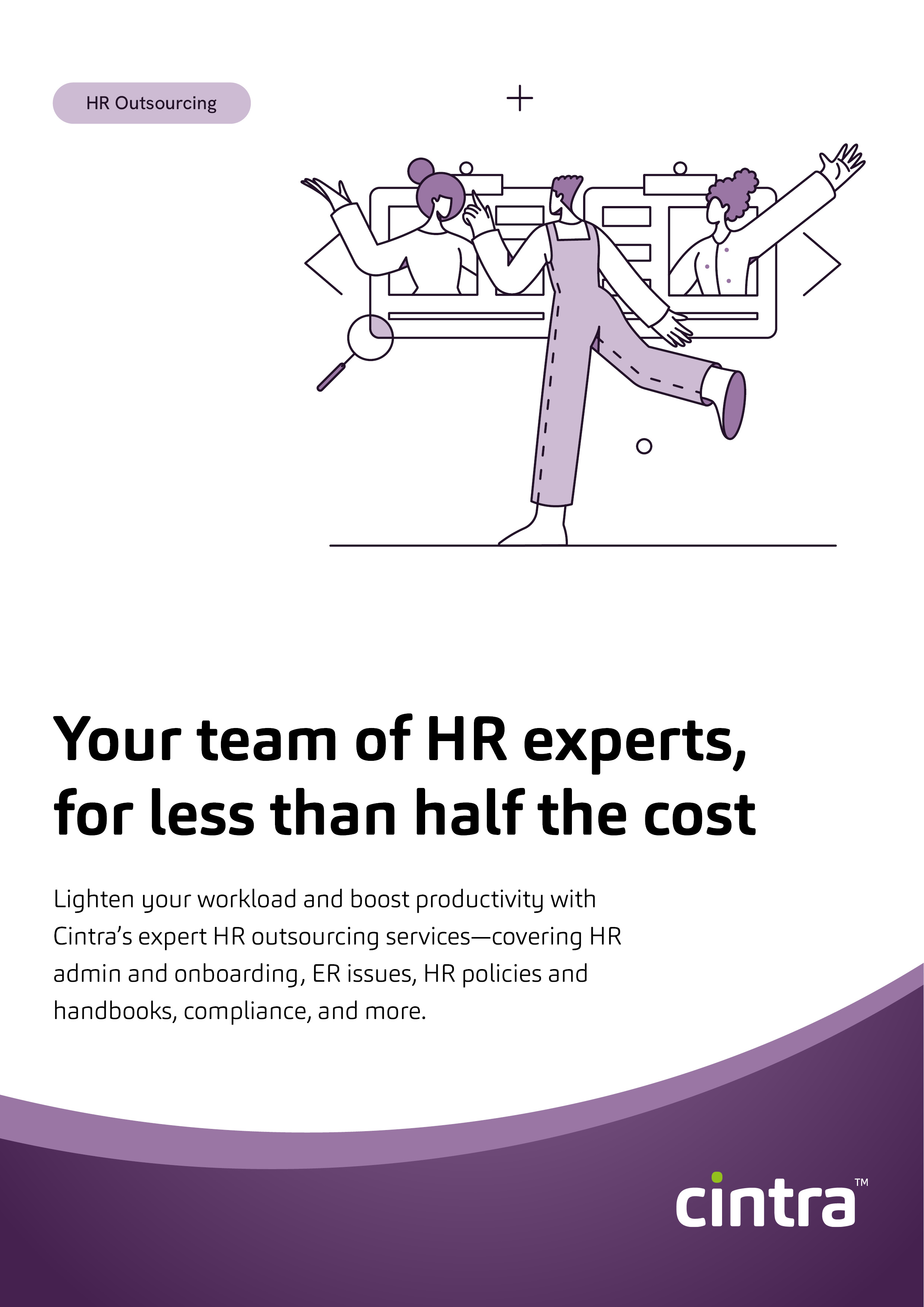“As businesses prepare for the future, HR leaders must redefine their focus to address strategic priorities in 2025 and beyond. Key areas include developing managers, embedding organizational culture, strategic workforce planning, managing change and optimizing HR technology.” Top HR Focus Areas for 2025 and How to Excel in Them — Gartner.
From the moment you hire your first employee, you’ll need an HR department. That’s just a fact.
Whether you’re just starting out with a handful of people, or you’ve been employing 500+ people for many years, you’ll find that most HR challenges are the same.
Let’s take a look at some of the biggest HR challenges in 2025 and how you can solve them.
Budget constraints
HR Managers are often called upon to justify headcount and employee spend.
Before starting your workforce planning, it’s essential to know what’s needed for operational effectiveness. To do this, you should understand the outputs of each role compared to the workload—this forms the basis of a workforce planning strategy.
When thinking of resources – think of the required hours you need rather than the number of people. We say this because, since the Flexible Working Bill came into force in April 2024, there has been an increase in flexible working requests. As a result, you may find that your employee numbers remain the same, but the available working hours could significantly decrease.
Budget considerations aren’t just about an employee’s salary, but you’ll also need to factor in all of the employee on-costs associated with that employee.
When considering your budget, plan for these HR challenges:
- Cost of recruitment
- Training
- Employee benefits
- Additional equipment/workplace costs
Compliance with employment laws and regulations
Keeping updated with legislative changes like the Worker Protection (Amendment of the Equality Act 2020) Act 2023 and managing the associated costs of compliance can be a full-time job. This may also add to your HR budget by necessitating additional headcount.
Using an outsourced HR service makes the most sense. They handle the work, so you can concentrate on your “normal day job.” This way, you won’t need to worry about missing any important changes, which could become costly if non-compliance with legislation leads to an employment tribunal claim.
Compliance with employment laws and regulations like the national minimum wage, and the Equality Act is one of the most important (if not the most important) HR challenges to get right.
Lack of clear communication channels
Having processes and policies in place is the first step, but this won’t be of benefit unless you communicate what these are.
When considering your communication strategies and effectiveness, you must consider the make-up of your workforce. Sending out an email notification to a population of workers who aren’t sitting at a computer all day is “hit and miss”. Employees who are largely from non-English speaking backgrounds may not be able to read and understand written messages as they’re intended.
Every key message should be communicated using a variety of communication channels. Consider the following and the best use of these:
Allows for detailed messages that can be retrieved and reviewed for future reference. Consider whether you have an interpretation service that can provide these in other languages depending on the make-up of your workforce.
| |
Teams or other messaging platforms | These are good for quick “in-the-moment” messages and can be accessed by people in the field from a smart device. Consider whether all your employees have access. It’s also easy to miss messages in this type of group forum.
|
Intranet or employee portals | This is good for keeping important company information for reference and an area that can be structured to make things easy to find. Consider whether all of your employees have access and whether it’s something that they log onto regularly. |
Newsletters | These can be used for company updates or employee news. Consider making them fun and have an element in your newsletter that encourages people to want to open them and read them. |
Webinars/Zoom or team meetings | Regular updates using these mediums can help make sure that all of your teams (even those working at multiple sites) are included in communication. These are particularly good for messages from key members of the leadership team. |
Get the latest HR updates, straight to your inbox
Get the latest HR insights and best practice guides, direct to your inbox.
Attracting and retaining top talent
Your branding and reputation are key elements in attracting top talent.
In-demand employees can be selective when looking at roles and will often research your business before they decide to make an application.
It’s worth noting that jobseekers can visit numerous websites to gauge current and previous employee satisfaction. Some examples include:
- Glassdoor is one of the largest and most popular websites for employee reviews and provides details and insights into company culture, benefits, interviewees’ experiences and overall employee satisfaction.
- Indeed – although primarily a job search platform also allows employees to leave reviews on companies that they’ve worked for. Employees can rate their employers based on work-life balance, salary, job satisfaction and culture.
Other sites include Trustpilot and Capterra.
Remember, retaining good employees, once recruited, comes down to a number of key factors including:
- Company culture and work environment
- Work-life balance and flexibility
- Compensation and benefits
- Opportunities for career progression and professional development
- Good leadership
Lack of automation
Many companies fall into the habit of “doing what they’ve always done” – it’s worked for umpteen years and have a “if it isn’t broken, don’t mess with it” attitude.
The reality is, technology is progressing almost faster than any of us can keep up. And your competitors are likely to be looking at ways of creating greater efficiency with less head count.
Don’t fall behind. And don’t let this HR challenge get the better of you.
Embracing automation can reduce the need for manual, repetitive tasks and free up time for your HR team to concentrate on more productive and enjoyable initiatives like employee engagement and talent development.
Other benefits of automation include:
- Better accuracy and a reduction in errors
- The ability to scale up operations more effectively
- An opportunity to reduce costs
- Faster and more efficient responses to HR queries
Managing employee performance
Performance management is often seen as one of the biggest HR challenges. It’s sometimes associated with delivering bad news or focusing only on what employees are doing wrong. But this shouldn’t be the case.
Perhaps we should reframe it not as “Performance Management,” but as “Performance Discussions.” This change in mindset highlights that these conversations are as much about recognising the value of your employees’ contributions as they are about addressing areas that need improvement. It’s a two-way dialogue aimed at helping your employees grow and succeed, which benefits both the individual and your organisation.
Performance management should be viewed as a tool for support—helping employees reach their full potential by providing clear guidance and regular feedback. It’s about creating a work environment where your employees feel empowered to do their best work. This approach helps them meet the needs of the business while also advancing their own careers.
Make feedback a regular occurrence. Rather than waiting for formal reviews, guidance on performance should happen regularly. Everyday conversations are the key to keeping your employees on track and making sure that they know where they stand. When bi-annual or quarterly performance reviews come around, they should simply be a recap of the ongoing discussions that have already been happening, allowing for a more productive meeting.
Managing employee performance doesn’t have to be an HR challenge. With the right tools, it can be an easy part of your everyday operations. Cintra’s HR outsourcing offers an intuitive and adaptable performance evaluation tool as part of their HR Administration solution. This tool takes the worry and anxiety out of performance management, making it easier to have meaningful discussions, track progress, and keep employees motivated and engaged.
Building a positive company culture
Implementing a positive company culture is a big HR challenge, and has a significant impact on employee satisfaction, productivity and employee retention. This makes it a critical focus for HR.
A healthy culture is key to encouraging open communication, and as we all know, without this, we run the risk of misunderstandings and potential conflicts.
Culture starts from the top. It needs to be part of the business’ DNA. This is reflective in the messaging from senior leadership and line managers on important issues like employee well-being, diversity and inclusion. It also shows how they tackle (and talk about) important issues like sexual harassment and preventing burnout in the workplace.
Getting feedback is one way to do a sense-check on how you’re doing as a business. Don’t shy away from asking your employees for frank and honest opinions. Using Employee Opinion Surveys is a great way to do this, or you can consider focus/listening groups as well as including questions about job satisfaction and overall satisfaction in your 1-2-1 meetings.
Let Cintra turn your HR challenges into a well-oiled, automated machine (with a human touch)
If you want to face your HR challenges head on, book a demo with one of our expert HR outsourcing consultants today.

Find out more about Cintra's HR services covering HR admin and onboarding, ER issues, HR policies and handbooks, compliance and much more.
Download your Cintra HR Services brochure


